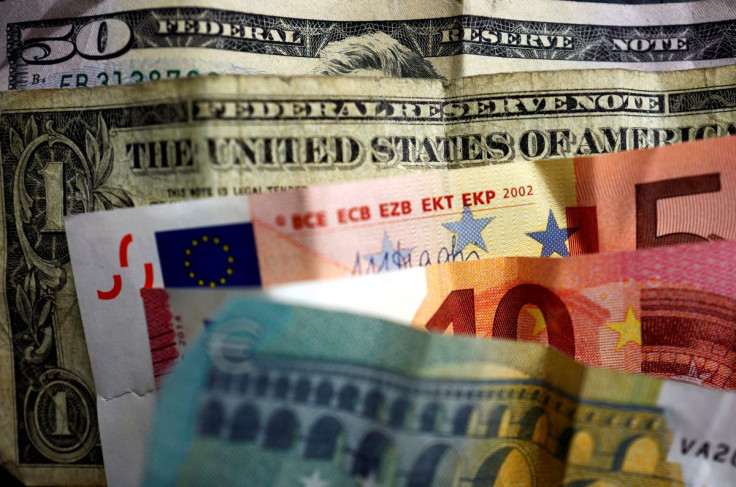Dollar Edges Higher As Surging Energy Prices Prompt Safe-haven Flows

The U.S. dollar rose on Monday, lifted by safe-haven flows, as investors weighed the effects on global economic growth of oil prices that hit 14-year highs after the United States and European allies considered banning Russian crude imports.
The dollar index, which measures the value of the greenback against six global peers, was last up 0.33% at 99.24.
The euro was down 0.7% against the dollar at $1.08575 on concerns that higher energy prices will spark stagflation and hammer the European economy as it tries to recover from the pandemic.
"The Russia-Ukraine conflict is continuing to lead to further surges across several commodities, which is threatening growth prospects for the year," said Edward Moya, a senior analyst at Oanda.
Brent crude was up 4.1% at $122.97 a barrel, having earlier reached as high as $139.13 - last hit in July 2008 - as the American and European ban on Russian oil imports was being considered, while it also looked less likely that Iranian crude would return swiftly to global markets. [OIL/]
"There are a growing amount of jitters that will probably keep the dollar supported, as you're going to see the U.S. economy is still nicely positioned in the short term because it's not as dependent on Russian energy supplies as Europe is," Moya said.
That will likely benefit the dollar in the short term, Moya added.
After Russia invaded Ukraine, euro/dollar volatility gauges climbed to their highest levels since March 2020.
The euro, having lost 3% in three days, on Monday held above $1.08, with its about-turn at $1.0806 potentially noteworthy for coming days, said Joe Manimbo, senior market analyst at Western Union Business Solutions.
"Maybe the market will be careful about pushing it further downward ahead of the European Central Bank meeting on Thursday," Manimbo said.
The ECB will wait until the last months of the year to raise rates, according to economists polled by Reuters poll.
After flirting with parity to the Swiss franc earlier on Monday, the euro traded up 0.32% at 1.00495 francs.
Against the dollar, a volatile British pound was last down 0.91% at $1.3108.
The Aussie, which tends to trade with commodity prices, was down 0.56% against the dollar, more than reversing all of an earlier 1% rise.
The conflict in Ukraine and harsh international sanctions on Moscow have sent Russian assets tumbling, while prices of the country's exports such as precious metals, oil and gas have soared at a time when the global economy was already grappling with inflationary pressures.
Europe is the most vulnerable as it imports as much as 40% of its natural gas from Russia and the single currency has become increasingly correlated with oil prices - the higher oil climbs, the more the euro falls.
"The euro continues to absorb the most pressure of major currencies on the fallout from the war in Ukraine," said John Hardy, head of FX strategy at Saxo Bank.
According to Goldman Sachs, a sustained $20 oil rise shock would lower real economic growth in the euro area by 0.6% and by 0.3% in the United States. But in a more adverse scenario if Russian gas shipments via Ukraine were curtailed, then euro area GDP could fall by as much as 1% from gas alone.
© Copyright Thomson Reuters 2024. All rights reserved.




















